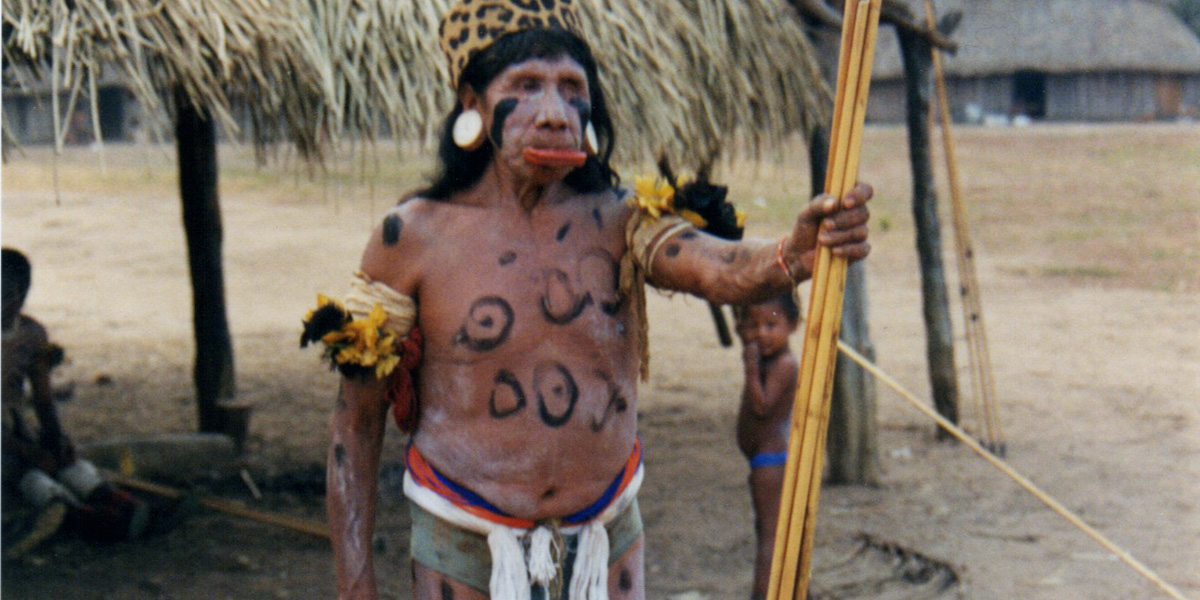
In 1978, at age 19, Mariana Ferreira arrived in the indigenous village of Xavante, Brazil, prepared to teach mathematics to children. She quickly discovered that people of all ages were eager to learn mathematics and cartography, as a way to confront issues of human rights, especially their struggles to keep sovereignty of their land.
Ferreira’s work with the Xavante people has continued for four decades. The Liberal Studies professor has worked with them in creating many maps and map books, served as an expert witness in land-use trials and conducted research on rates of Type-2 diabetes in their community. Her new book, Mapping Time, Space and Body: Indigenous Knowledge and Mathematical Thinking in Brazil (Sense Publishers), showcases her research on bringing “people, land and numbers together in the fight for justice.”
Ferreira, who joined SF State in 2003, is a Brazilian anthropologist specializing in the social causes of illness, including diabetes mellitus. She is particularly interested in a physiology of oppression that connects indigenous peoples worldwide to diabetes, social inequality and colonial trauma. Ferreira also incorporates performing arts into her scholarship and activism, as explored in her recent book Acting for Indigenous Rights: Theatre to Change the World.
“Mariana Ferreira has a remarkable record of fieldwork in several indigenous communities,” State University of Campinas mathematics Professor Emeritus Ubiratan D’Ambrosio writes in the book’s foreword. “More than just acting as a researcher, she is engaged in social and political actions to defend indigenous peoples’ rights and dignity. Her expertise in anthropology supports her struggle for human rights and social justice.”
Mapping Time, Space and Body makes frequent references to the U.N. Declaration on the Rights of Indigenous Peoples. Adopted in 2007, this non-binding declaration has served as a valuable tool in protecting the right to self-determination, right to development and collective rights for indigenous peoples worldwide. Their population comprises 370 million in 90 countries, according to the U.N. There are about 900,000 indigenous people in Brazil, representing 200 societies, Ferreira says.
The indigenous communities have a unique approach to math and cartography, Ferreira says, often incorporating shamanic wisdom and other cultural characteristics.
“The Xavante people are concerned not only with spatial elements, but also social and environmental maps that show primarily how maps are occupied by people,” says Ferreira, who also serves as co-director of SF State’s Global Peace, Human Rights and Justice Studies Program. “Their maps reflect who they are; they are mapping their bodies.”
The book is an ideal read for students interested in math education and indigenous rights, Ferreira says.
“Based on real-life experiences, this book can help show you how to solve problems in daily life with resources from mathematics,” she says.
For her next book, Ferreira plans to share her lifetime of experiences and photographs exploring relationships between animals and humans in the Amazon. When first arriving in Brazil to teach in Xavante in 1978, for example, she found herself face to face with a jaguar. After hiding in a tree for eight hours, she was able to escape using an old-fashioned mapping tool — She threw her compass at the jaguar. After that, her Xavante colleagues wouldn’t let her travel in the jungle alone, all the while working together to create maps that would depict the sounds and smells of such lurking predators.
Links
- Mapping Time, Space and Body: Indigenous Knowledge and Mathematical Thinking in Brazil
- Acting for Indigenous Rights: Theatre to Change the World
- Right to Know
- Liberal Studies Program
Photo: Romdó Suyá, ceremonial leader of the Suyá people, in the Xingu Indigenous Park. Photo by Mariana Ferreira.